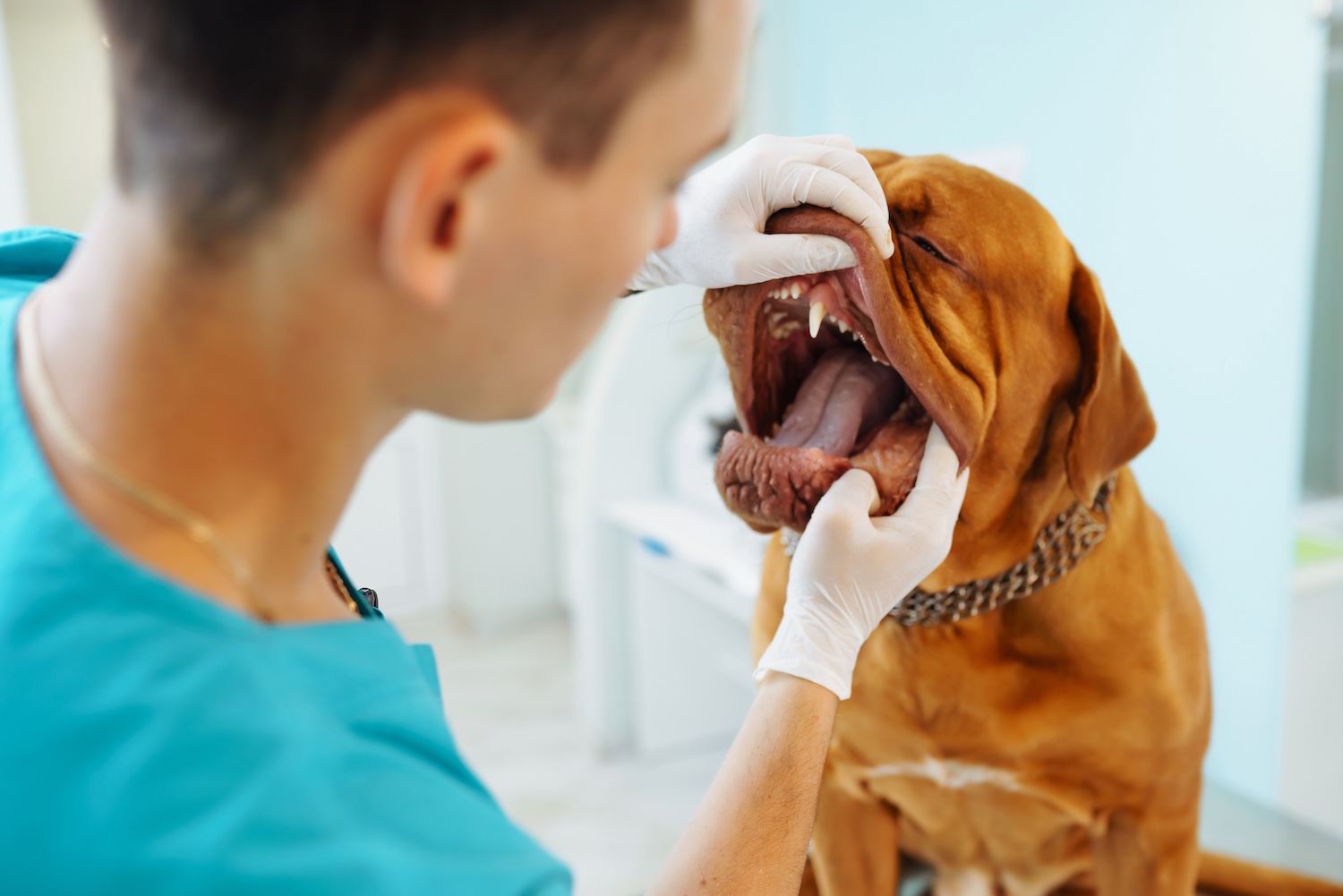Your dog’s dental health is more important than you might think. Proper oral hygiene not only ensures fresher breath but also helps prevent serious health issues like infections, tooth loss, and even organ damage caused by bacteria entering the bloodstream. But when it comes to professional dog teeth cleaning, many pet owners are left wondering, “How much will this cost?” This guide will break down everything you need to know about dog teeth cleaning costs, what’s included in the process, and how to save money while keeping your furry friend healthy.
Pro Tip: Regular use of dental chews can save you big on costly professional cleanings while keeping your pup’s smile healthy and bright!
Some of the links on this page are affiliate links, which means we may earn a commission at no extra cost to you if you make a purchase. As an Amazon Associate I earn from qualifying purchases. We only recommend products we genuinely love and think you’ll find helpful!
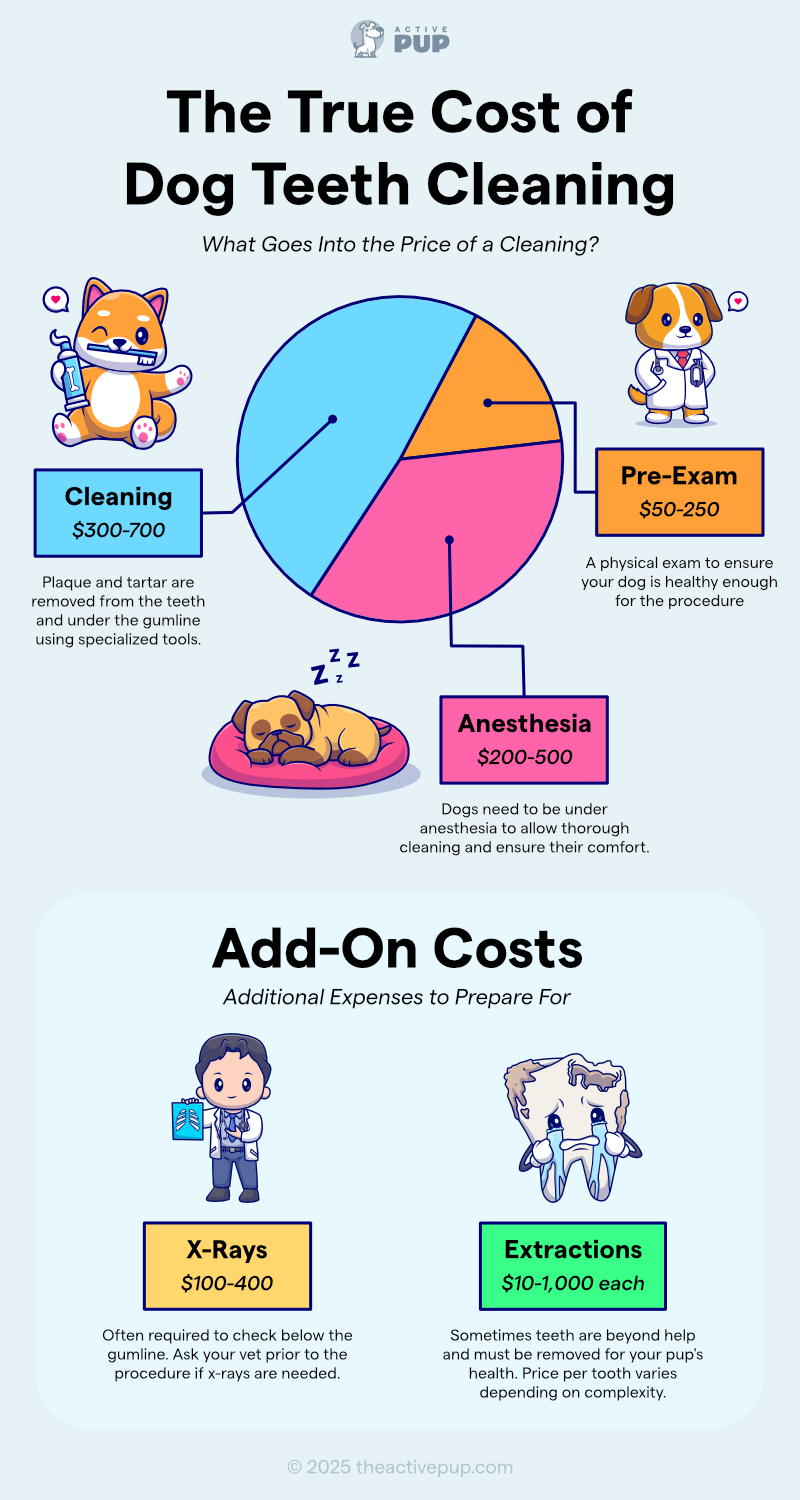
Dog Dental Cleaning Cost Breakdown
The cost of dog teeth cleaning can vary widely depending on several factors:
Standard Cleaning: $300–$700
A routine cleaning without complications typically falls within this range.
X-rays: $100–$250
If the vet suspects issues below the gumline, x-rays may be required.
Extractions: $50–$500 per tooth
Severe dental issues may require tooth removal, which adds to the cost.
Factors Influencing Cost of Dog Dental Cleaning:
- Your dog’s size and breed: Larger dogs often cost more due to longer cleaning times.
- Geographic location: Costs tend to be higher in urban areas.
- Additional procedures: Extra services like fluoride treatments or sealing can increase the price.
By understanding what influences the cost, you can better prepare for the financial investment and even find ways to lower expenses.
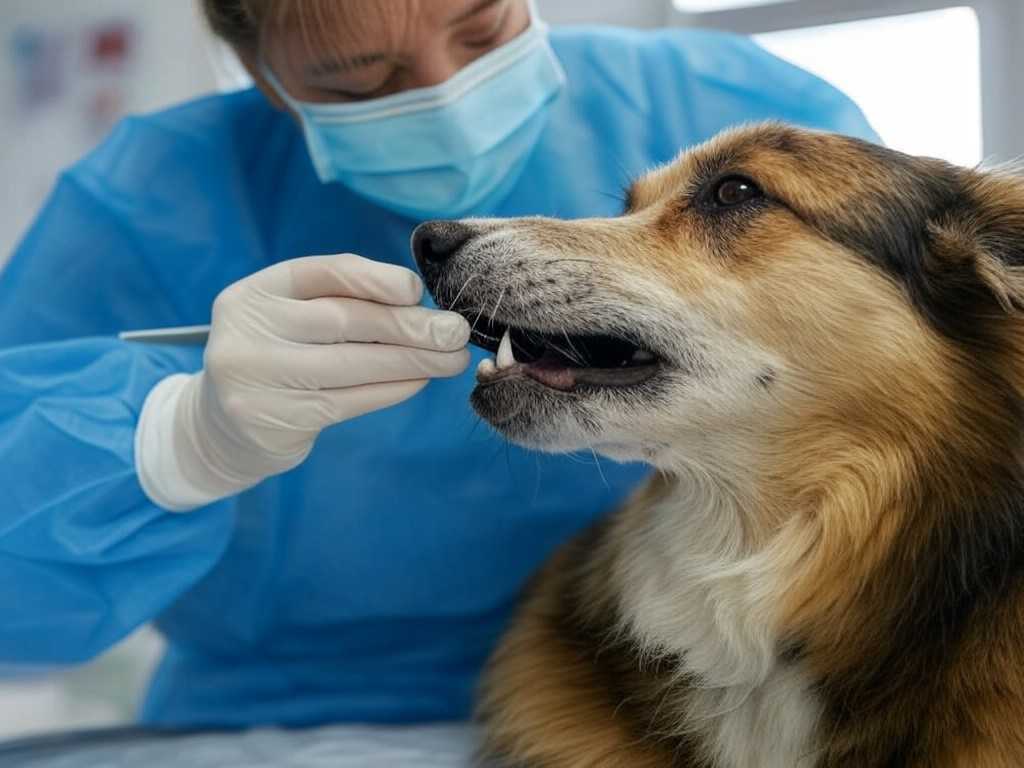
What is included in a Dog Teeth Cleaning?
Professional dog teeth cleaning goes beyond what you can achieve at home. Here’s what the procedure typically involves:
- Initial Exam – Before cleaning, your vet will perform a physical exam to ensure your dog is healthy enough for the procedure.
- Pre-Anesthesia Testing – To minimize risks, your vet may conduct blood work to check your dog’s kidney and liver function before administering anesthesia.
- Anesthesia – Dogs need to be under anesthesia to allow thorough cleaning and ensure their comfort.
- Scaling and Polishing – Plaque and tartar are removed from the teeth and under the gumline using specialized tools. Teeth are then polished to prevent future buildup.
- X-rays and Extractions (if needed) – If your dog has damaged teeth or gum disease, x-rays may be required, and extractions might be necessary.
- Post-Cleaning Care – Your dog will be monitored as they wake from anesthesia, and your vet may recommend follow-up care or medication.
This multi-step process ensures your dog’s teeth are clean and healthy, but it also explains why professional cleaning costs can add up.
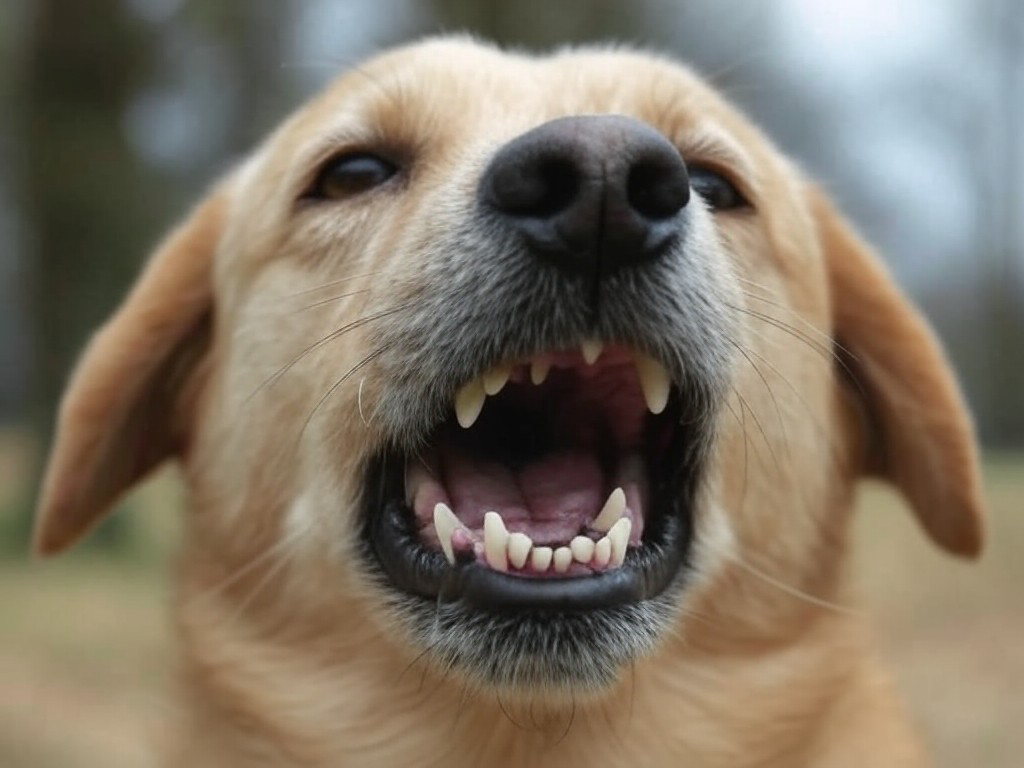
Signs Your Dog May Need a Dental Cleaning
Recognizing the signs of dental issues early can save you money and prevent discomfort for your pup. Keep an eye out for:
- Bad breath: Persistent bad breath can indicate plaque buildup or gum disease.
- Discolored teeth: Yellow or brown stains are signs of tartar.
- Difficulty chewing: If your dog avoids eating or chews on one side of their mouth, they may have dental pain.
- Red or bleeding gums: Gum inflammation is a common symptom of periodontal disease.
If you notice any of these signs, consult your vet for an evaluation. Need help finding the perfect vet? See our comprehensive guide for choosing a veterinarian.
How to Reduce the Cost of Dog Teeth Cleaning
While professional cleanings are essential, there are steps you can take to lower the overall cost:
- Invest in Preventative Care
Dental chews, toys, and water additives can help reduce plaque buildup, potentially extending the time between cleanings. Check out our guide to the best dog dental chews for recommendations. - Look for Low-Cost Clinics
Some veterinary schools, shelters, and non-profits offer discounted dental services. Research local options in your area. It’s important to find the right vet for you and your dog’s continued health. - Consider Pet Insurance
Some pet insurance plans cover dental cleanings, especially if they’re deemed medically necessary. Review your policy or shop for plans that include dental coverage. - Bundle Services
Some vets offer discounts if you schedule a cleaning alongside other routine care, such as vaccinations or wellness exams.
By being proactive and exploring your options, you can keep your dog’s dental health in check without breaking the bank.
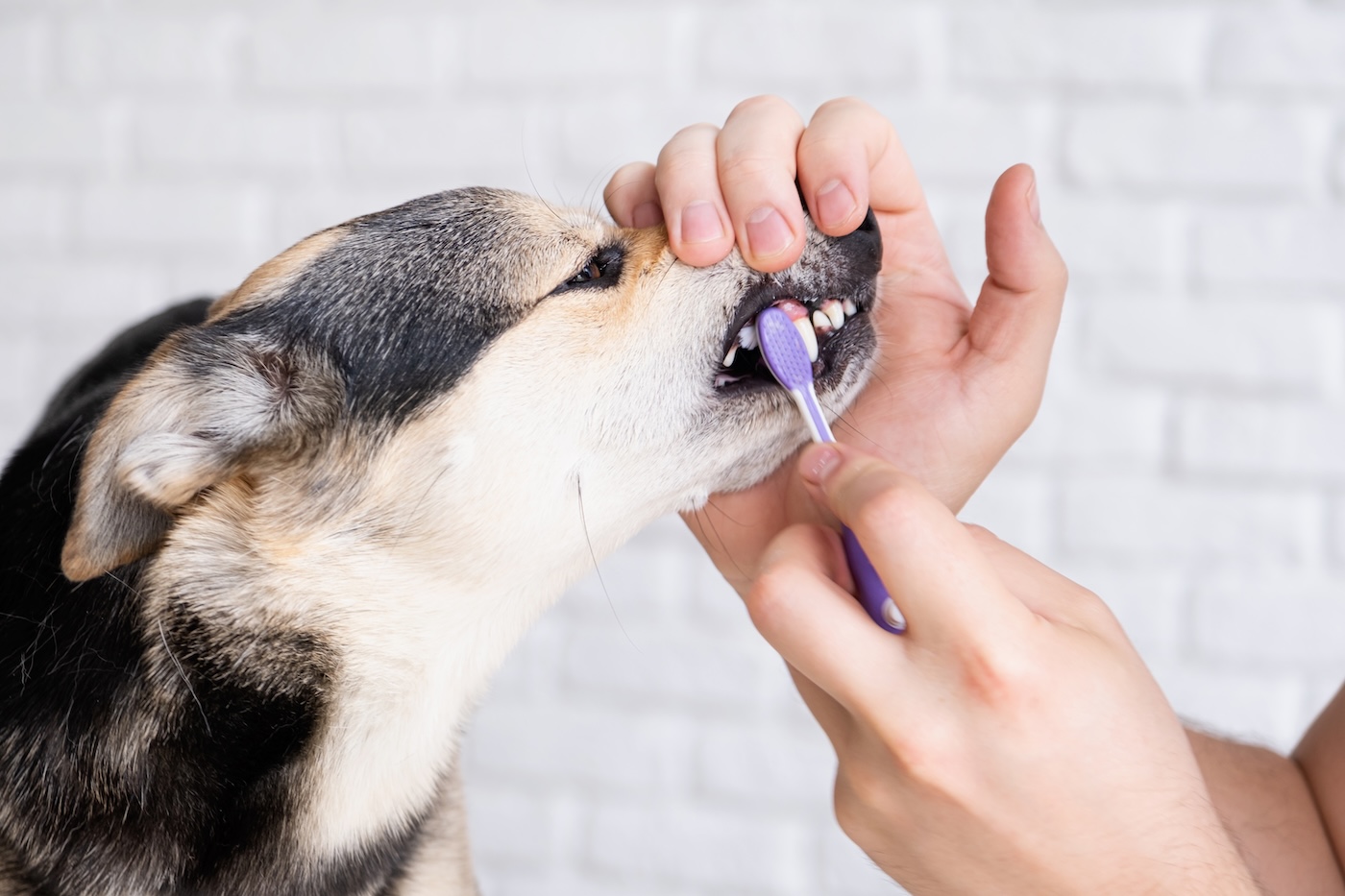
Home Dental Care to Save Money
Consistent home care is the best way to reduce the frequency—and cost—of professional cleanings. Here’s how you can maintain your dog’s dental health at home:
- Brush Their Teeth
Use dog-safe toothpaste and a soft brush. Aim for at least 2–3 times per week. - Provide Dental Chews and Toys
Products designed to clean teeth and massage gums can make a big difference. Check out our favorite dog dental chews. - Incorporate Water Additives
Dental water additives are an easy way to reduce plaque.
By combining regular home care with periodic professional cleanings, you can save money and keep your dog’s teeth in great shape.
Conclusion
Dog teeth cleaning may seem costly, but it’s a critical investment in your pet’s overall health. Understanding the costs involved, knowing how to reduce them, and taking proactive steps with home care can help you keep your pup healthy without breaking the bank.
For more tips on maintaining your dog’s oral health, check out our guide to the best dog dental chews. By staying informed and prepared, you can ensure your dog has a bright smile and a healthy future!
FAQs: Dog Teeth Cleaning
How Often Should You Clean Your Dog’s Teeth Professionally?
The frequency of professional cleanings depends on your dog’s oral health, age, and breed. Small breeds like Chihuahuas and Dachshunds are more prone to dental issues and may need yearly cleanings, while larger breeds with healthier teeth might only need cleanings every 1–3 years.
Regular home care, such as brushing your dog’s teeth and using dental chews, can significantly reduce how often they need professional cleanings.

